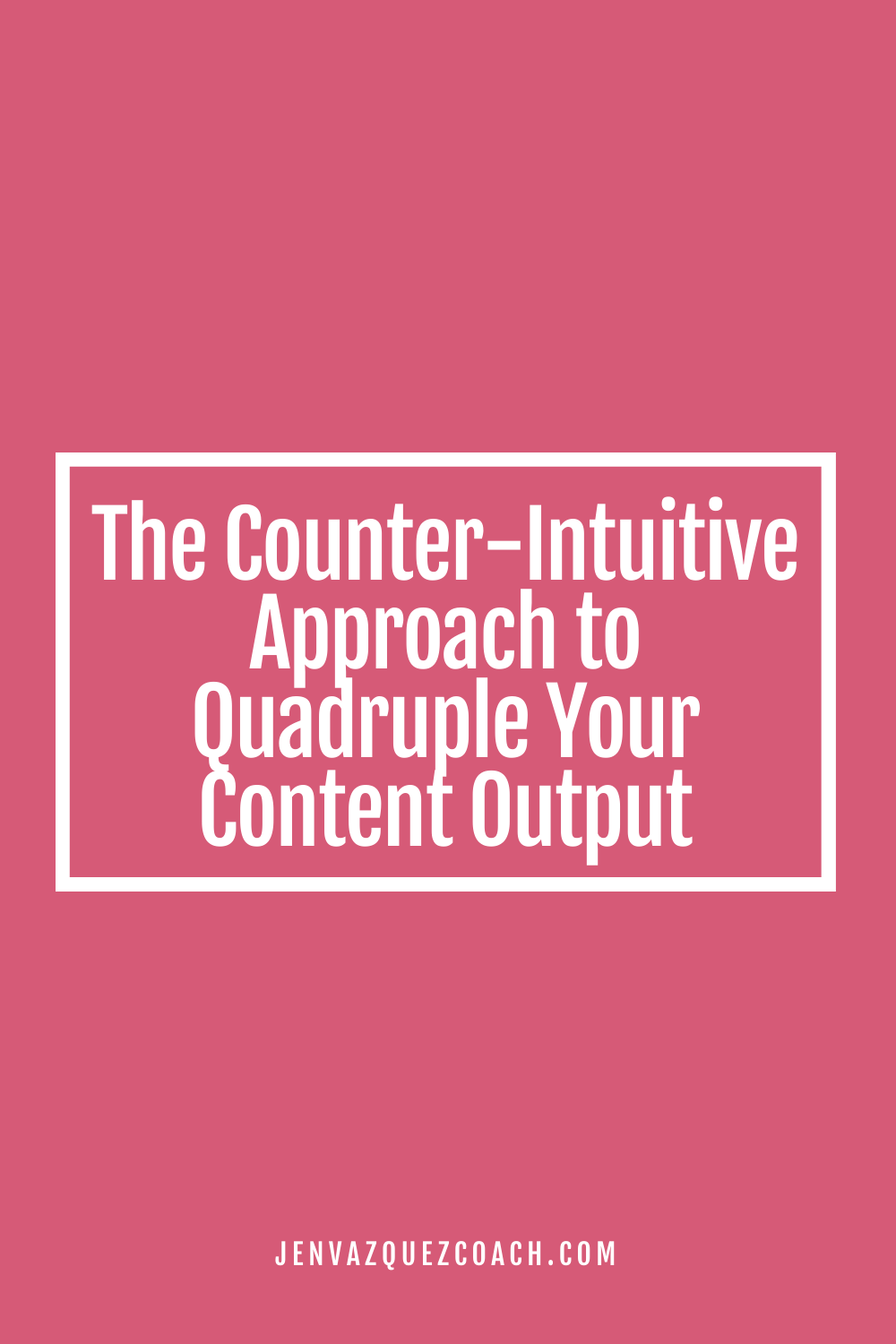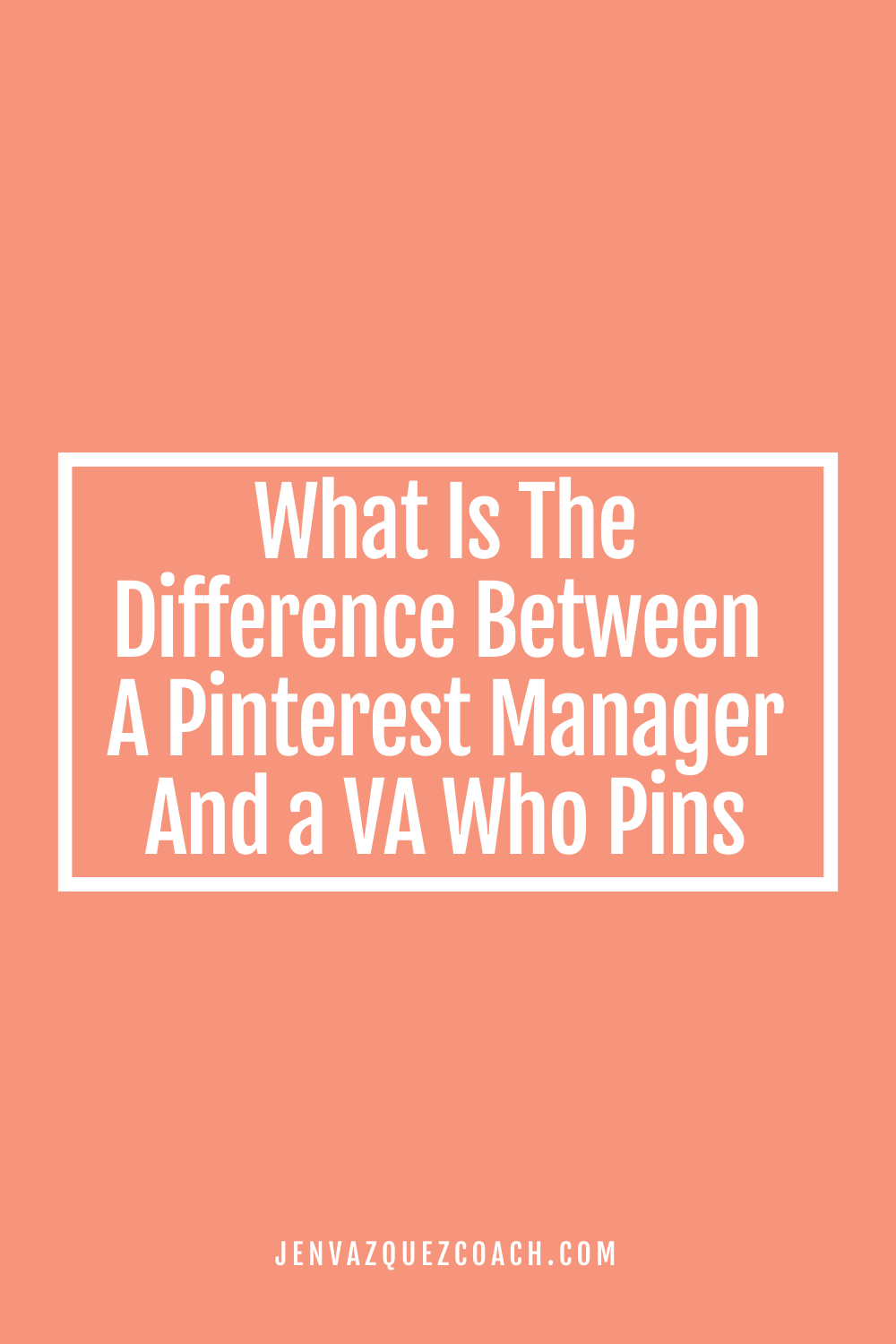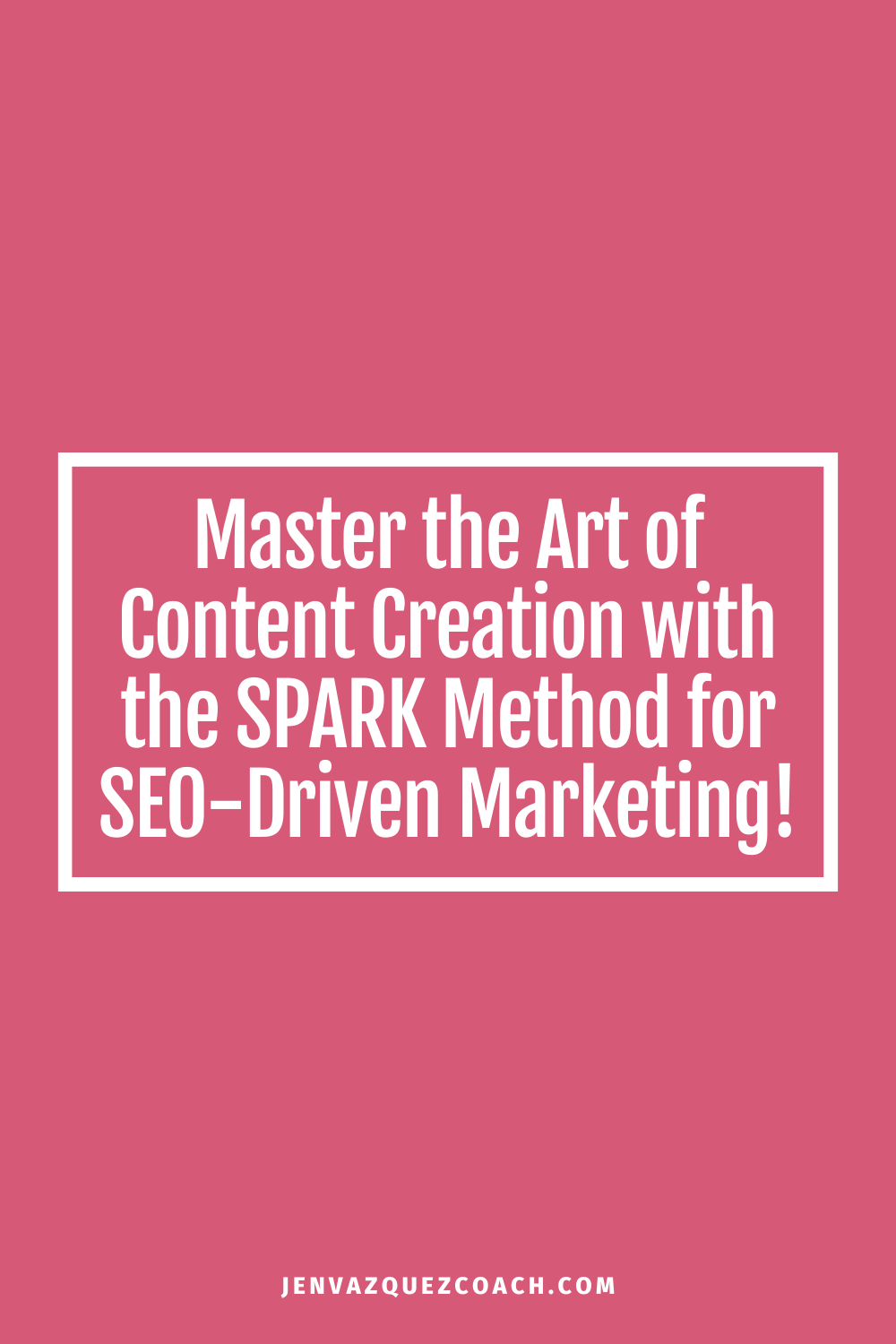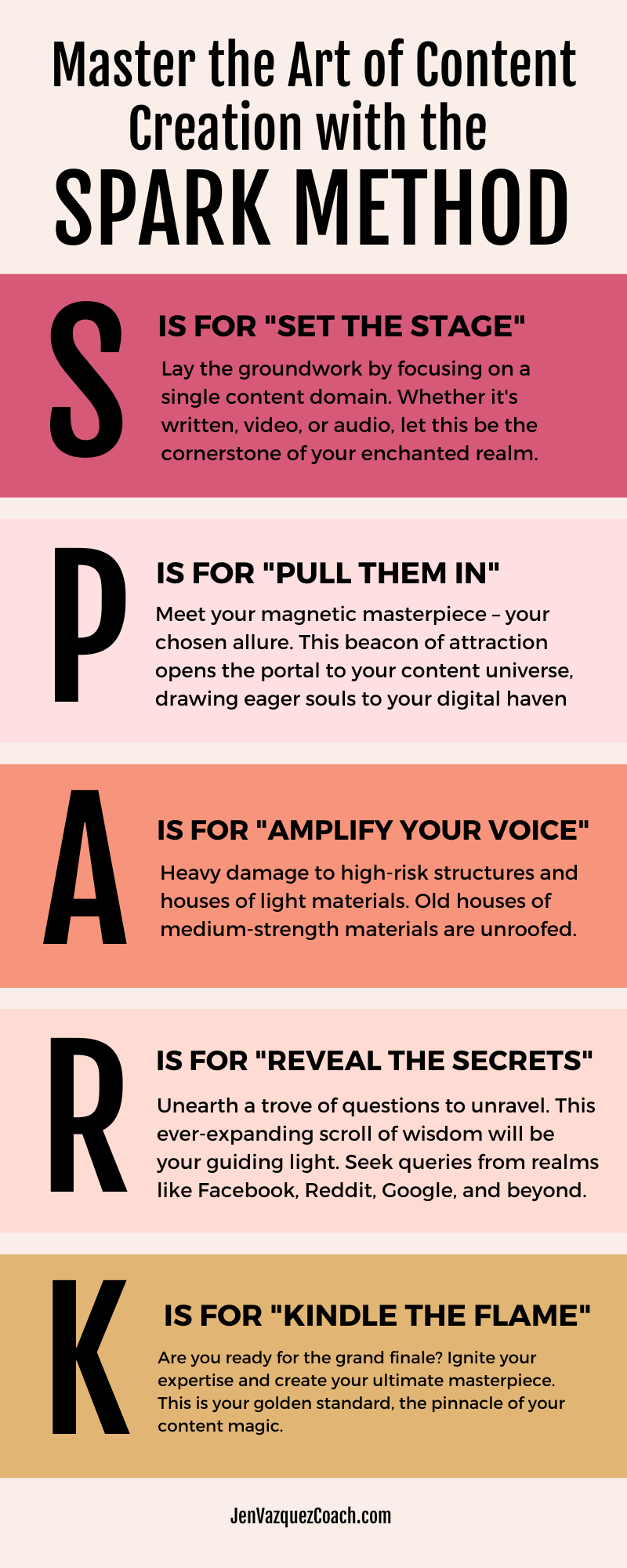Conversion Copywriting Tips: Boost Your Business with Persuasive Copy with Suzanne Reilley Hey there, fabulous entrepreneurs! Are you ready to unlock the secrets to writing copy that doesn’t just grab attention but also converts leads into loyal customers? Yep, me...
The Counter-Intuitive Approach to Quadruple Your Content Output
The Counter-Intuitive Approach to Quadruple Your Content Output
Hey there content creator! Feeling the pressure to keep up with that crazy content demand? Don’t sweat it! I’ve got the secret sauce to transform how you create. This post spills the beans on a totally unique strategy that’ll blast your content output into orbit. Get ready to say goodbye to endless content creation and hello to more time and epic results!
Hi, I’m Jen Vazquez, Pinterest marketing expert for busy service providers. If you’re tired of the Pinterest grind and want to attract more dream clients effortlessly, you’re in the right place! Whether you need done-for-you Pinterest management to free up your time OR want to learn my proven strategies to grow your own business, I’ve got you covered. Just schedule a Discovery call to see how I can help you with Pinterest.
The Struggle is Real: Understanding Your Content Challenges
Picture this: You’re in a constant battle to crank out fresh, awesome stuff. Blog posts, social updates, videos… the to-do list is out of control! It’s like juggling a gazillion flaming chainsaws. Yikes! Plus, the content world changes faster than you can say “viral video.” It’s exhausting trying to keep up!
But that’s not all! You gotta make your content stand out in a sea of online noise. It takes major creativity and effort to get heard! Oh, and don’t forget about keeping that brand voice strong. With teams spread out, things can get messy, and your message gets lost.
Now take a deep breath ’cause here comes the good part… REPURPOSING! It’s the secret weapon that’ll save you time, boost productivity, and quadruple your output. Boom!
The Power of Repurposing: Work Smarter, Not Harder
Repurposing is like giving your content a costume change! Instead of starting from scratch every time, remix your awesome stuff into new formats. Here’s how:
- Blog to Boom: Turn that killer post into a snazzy infographic or a podcast episode.
- Social Snackables: Snip your content into bite-sized social media gold.
- Consistency King/Queen: Repurposing keeps your message clear across all platforms.
Repurposing extends your content’s lifespan too. It’s like the best content party ever!
User-Generated Content: Your Community is Content Gold
Wanna tap into a content wonderland? Your community is the key! Testimonials, reviews, those hilarious blog comments… they’re all content treasure. Here’s how to make it happen:
- Feedback Frenzy: Ask for opinions and show your followers that you care.
- Testimonial Time: Feature customer wins on your website or social media.
- Community Love: Respond to comments, share ideas, and give those shout-outs!
By using your community’s voice, your content becomes mega authentic and builds crazy trust.
Have a Question for Jen?
Brand New Offer
Get Lifetime Pinterest coaching with Jen Vazquez of a one-time fee of $197
Yo, want some kickass marketing coaching for LIFE?
Yeah, you heard that right! I’m giving you lifetime access to my brain, my Pinterest secrets, marketing workflows, and a whole community of rockstars – all for a one-time fee of just $197. 🤯
*Limited Time Offer
Streamline Your Workflow: Tools to the Rescue!
Time to level up your content game with some sweet tools and tactics:
- The Content Calendar: Your new BFF for organization and planning power.
- Repurposing Remix: It’s content makeover time!
- Teamwork FTW: Collab tools like Google Docs keep everyone in sync.
- Automate It: Social schedulers and email tools work magic while you sleep.
These tools are like giving your content creation superpowers!
Quality over Quantity: Content that Rocks
Now, let’s make that content shine! It’s not about volume; it’s about creating stuff that connects:
- Know Your Tribe: Their problems, their dreams – that’s your content fuel.
- Storytelling Superstar: Share those wins, fails, and everything in between.
- Visuals FTW: Images, infographics, and videos make your content pop.
- Call-to-Action Champ: Tell your readers what to do next with exciting CTAs.
Take Action for Awesome Results!
Ready to quadruple your output? Heck yeah! Download this checklist and unleash those content superpowers:
Remember, rockstar content isn’t about quantity, it’s about quality. Embrace these strategies and watch your content crush it!
Here is more information that may be helpful!
Conversion Copywriting Tips: Boost Your Business with Persuasive Copy with Suzanne Reilley
Pinterest Trends Weekly: In Sport Mode
Pinterest Trends Weekly: In Sport Mode Hey there! I'm Jen, your go-to marketing bestie and cheerleader. I'm here to help you work smarter, not harder, when it comes to marketing. Every week, I'm diving into the hottest Pinterest trends so you can get ahead of the...
Pinterest Manager vs. VA Who Pins: Who’s Right for Your Business?
Pinterest Manager vs. VA Who Pins: Who’s Right for Your Business? Ready to dive into the world of Pinterest but unsure whether to hire a Pinterest Manager or a VA who pins? Let’s break it down and help you make the best choice for your business.Expertise in Pinterest...
Don’t Forget To Pin It!

































